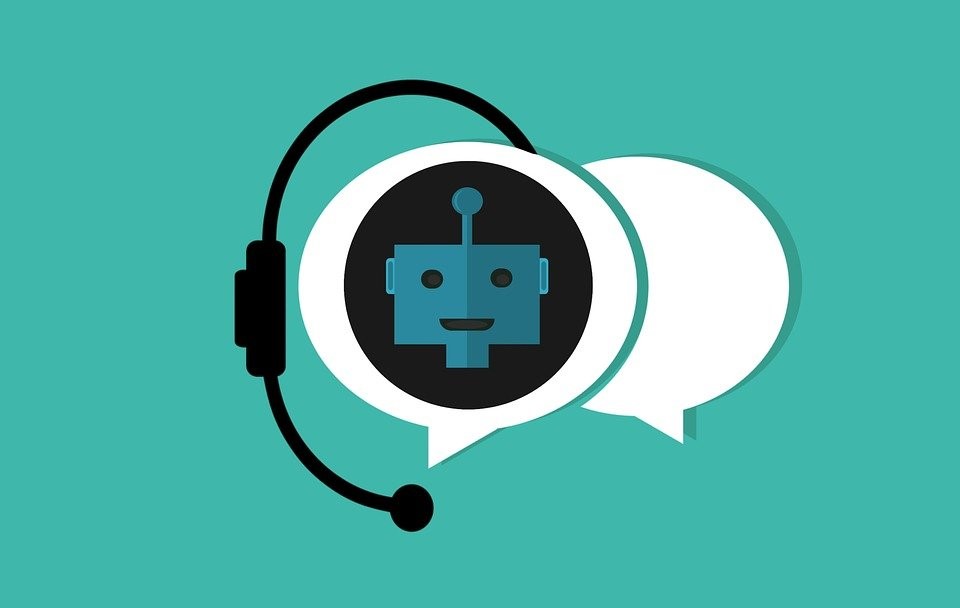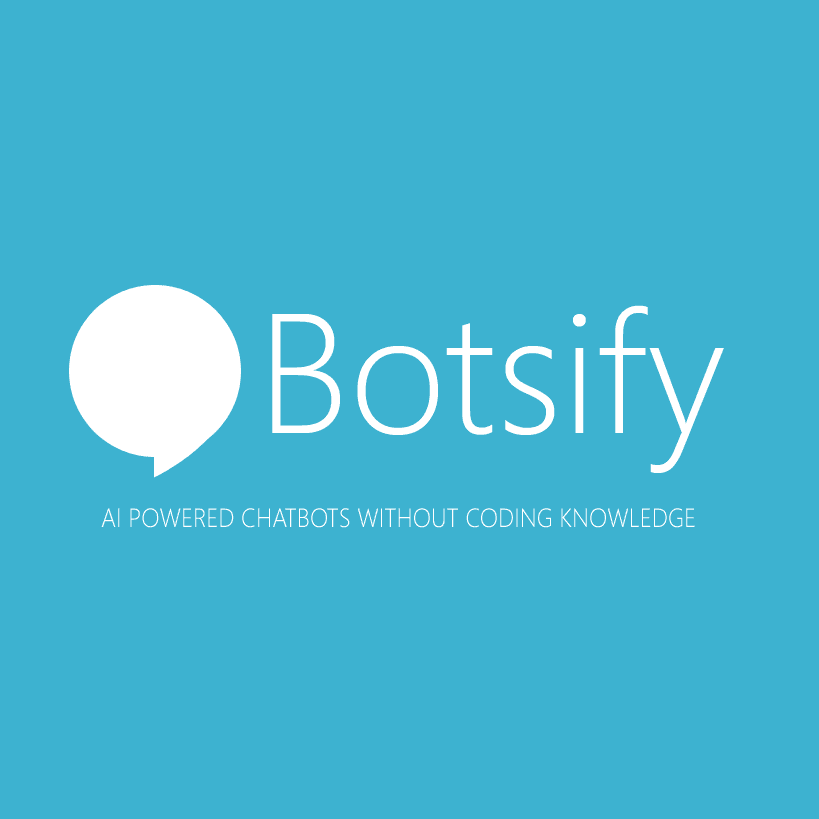Toggle navigation

The adage ‘customer is the king’ holds true even to this day. Every business, regardless of how big it may be, strives to deliver an exceptional experience to its customers. Over the last decade, technology has grown by leaps and bounds; this evolution has spawned tools that are redefining customer experience. Chatbots are one such tool.
Today, businesses of all sizes are leveraging the power of chatbots to resolve customer queries, troubleshoot issues, and expedite communication. From basic chatbots that could answer only pre-fed questions to highly intuitive ones that can almost impersonate humans, we have come a long way.
So, what are these chatbots and how can you build one for your business? Let us discuss.
What is a Chatbot?
A chatbot is a software program that simulates human conversations through voice or text or both, allowing humans to interact with a digital interface as if it were a real person. Built using artificial intelligence, chatbots can be integrated with and used on any major messaging application.
Virtual assistants such as Alexa, Siri, and bots on Facebook Messenger or websites fall under the ambit of chatbots. Chatbots can be broadly classified into two categories: rule-based chatbots and AI chatbots.
1) Rule-based Chatbots
These chatbots follow a set of established rules in order to answer the query posed by the user. They respond to a query depending on the rules they are trained on. They can only answer the questions they are programmed to perform, so they are only as intelligent as their programming code. They are incapable of carrying out complex conversations.
The automated bot you see on your banking application that answers simple queries is a classic example of a rule-based chatbot.
2) AI Chatbots
Chatbots based on AI-ML can handle complex conversations. They try to understand the context behind a query and respond accordingly. These bots learn from historical data and, as a result, refine their ability to answer queries over time.
How to Build an Intelligent Chatbot for your Business?
Now that you have a fair amount of clarity on what a chatbot is, let us see how you can build one for your business.
1) Define the Goals for Building a Chatbot
Before anything else, you need to decide the roles you want your chatbot to perform or the problem you want it to solve. The goals you set up, in this case, need to be specific, time-bound, and realistic. It is also important to assess if your bot will help you save time, effort, improve efficiency, or yield any other tangible benefit.
Start with simple goals and gradually move towards complex ones. It is important to understand that these goals will evolve as your business progresses.
2) Define Processes the Chatbot can take over
Once you have defined the goals behind creating a chatbot, make a list of the processes this bot can take over. Bots are typically meant for client-facing processes that are repetitive as well as time-consuming. Activities such as customer service, technical support, and sales processes (lead qualification), and recruitment fall in this category.
Once you have listed all such processes, evaluate each of these processes based on the following parameters:
Once you are done with the evaluation part, check the processes with the highest scores. These are the cases where you should go ahead with building a chatbot.
3) Choose the Right Deployment Platform/Channels
Once you are done with the second step, it’s time to decide the channels on which you want to deploy the chatbot. As you are building the bot for your customers, you need to analyze the platforms your customers frequent the most. Common deployment channels include Facebook Messenger, WhatsApp, Skype, Slack, or your own website.
While selecting a channel, it’s vital to keep in mind the following:
4) Choose the Right Development Platform
When it comes to building a chatbot, you can either use a chatbot builder or get chatbot services from a reliable development company such as Cyfuture. Chatbot platforms can be used to create simple bots with limited functionality. So, if you are running out of time, or have a limited budget, or both and can do with a simple bot, go for a chatbot development platform. However, if you have the budget and time and consider a chatbot as something of strategic importance, avail of chatbot services from a technology company.
Chatbot Development Platforms

If you are looking to develop a cheap and fast prototype, go for a chatbot builder. Most of these platforms come with a drag-and-drop functionality, so you don’t need any programming knowledge at all. Popular chatbot development platforms include:
ChatFuel: For those looking to build a chatbot for Facebook or Telegram, ChatFuel is a great option. The platform doesn’t require you to have any coding skills. You can set up the bot to send different responses to the same prompt. It can respond to questions as well as keywords entered by a user. Chatbots built with ChatFuel can collate and retain past user data and use the latter to improve their answering capability.
As far as the price goes, the basic version of ChatFuel is absolutely free. However, you can always upgrade to the premium version by paying a little extra ($30/month) and remove the ChatFuel attribution from the menu.
Manychat: It is among the most popular platforms to build chatbots for Facebook Messenger. The platform offers limited AI-ML capabilities, so you cannot expect a bot that understands and learns from its past conversations but you can surely create a captivating flow to engage your audience. So, a bot built with the platform can be a good marketing tool provided you design your workflows smartly. You can add buttons and chunks of pre-made text to overcome the limitations posed by Manychat.
The platform offers a free version to businesses that are new to chatbots. The premium version bills on the basis of the number of subscribers. Additional charges apply if you carry out email or SMS marketing through your chatbot.

Botsify: The platform comes with a simple drag-and-drop interface that enables you to build a bot with the utmost ease. With Botsify, you can build conversational forms and customize form fields. There is also a WordPress integration feature that lets you add users to the platform and send them daily updates to keep them engaged.
Its machine learning feature lets you record questions the bot didn’t understand; this allows you to improve the answering capability of your chatbot. Its query matching feature lets you personalize chats, creating a better user experience.
Botstar: This platform comes with a visual flow editor that lets you build chatbots for your website and Facebook Messenger. In addition, you get over 70 chatbot templates to choose from. These templates are segregated by industry, so you can choose the one that pertains to your industry and get your chatbot up and running with just a few clicks. For those seeking a user-friendly platform and avoid the hassle of hiring developers, this is a great option.
Botstar comes with 3 different pricing options: a free version, a pro version that costs $15/month, and an enterprise option with customized pricing.
Remember, most of these platforms have limited options for customization; this limits the functionality of your bot. Also, many of these platforms don’t have support and maintenance features, so you will need to train, upgrade, and set up the chatbot on your own.
So, long story short, if you intend to create an advanced chatbot, a development platform will not serve the purpose. You’ll be better off outsourcing the work to a reliable development partner such as Cyfuture.
5) Build a Detailed Roadmap
If you are taking chatbot development services from a vendor, have a roadmap in place to keep you on right track and expedite the development. Here are a few things you need to discuss with your development partner:
Use Cases
In order to have clarity on what your bot will be able to do and what it won’t, it’s important to list all the use cases for your bot i.e. writing what all your bot will be able to do. Here are some possible use cases:
It is equally important to put yourself in your user’s shoes and deliberate the questions he may ask from your bot. Frame as many questions as you can. Below are some examples:
6) Create Chatbot Persona and Logical Dialogue Flow
Understanding your target audience well is integral to the success of your chatbot. You can carry out research to find the demographics your customers belong to, the questions they are likely to ask, and so on.
Ask your customer service agents or sales team members what kind of questions they get frequently. You can also review call logs or emails of your company, go through its FAQs, check the inbox of your support email ID and even browse social media to find customer queries.
Once you have the list of questions, you can form answers for the same and submit the list of question answers to your chatbot development vendor. These will form a base for creating a chatbot flow.
If you are building the bot on your own, you have to decide which of these questions or phrases the chatbot needs to understand. Discover and list down as many ways as possible of saying the same thing.
For instance, if a customer has to connect with the contact center agent, he can say this in many ways: ‘How can I get in touch with your contact center agent?’, ‘What is your contact center’s number?’ ‘Do you have a number for contacting the support agent?’
So, for any customer request, you can think of as many variations of words and phrases your customer may type in. The higher the variations it is trained with, the more intelligent it will be in answering queries of real users.
In addition to creating a proper flow, there are certain elements you will need to incorporate in a chatbot conversation:
7) Build your Desired Version of the Chatbot
Once you have designed a dialogue flow, proceed to build your chatbot. In order to minimize the chances of a failure, start with an MVP (Minimum Viable Product), conduct beta testing, and then build the final product. In the beta testing phase, you can involve your real customers and even your co-workers. If a large number of people are involved in the testing phase, your bot will have more use cases and will be equipped to deal with more types of queries.
When testing, pay attention to elements such as:
Once you have analyzed the above elements and are satisfied with the results, proceed to build the chatbot solution of choice.
8) Deploy your Chatbot and Scale as Needed
Once you are through with the above steps, deploy your chatbot on the platform of choice. It is important to remember that you cannot just set up a chatbot solution and forget. It needs to be constantly worked upon, reviewed, and improved.
Start small-build an MVP first, and then scale as required. You can feed your bot with data to make it more intuitive, integrate it with CRM/Google Maps, deploy it on more channels, and add new languages. In essence, you can scale your solution after a couple of months as you deem fit.
Build Intuitive Chatbots to Redefine Customer Experience
In this day and age, when technology has simplified communication, a chatbot presents a great opportunity to businesses to connect with customers on a range of platforms and create a loyal customer base.
Cyfuture boasts of a team of competent developers capable of spinning up sophisticated chatbot solutions that deliver the highest quality of customer service and help you stay ahead in the game.
Looking for chatbot development services? Connect with our technology experts today and get a solution aligned with your needs.